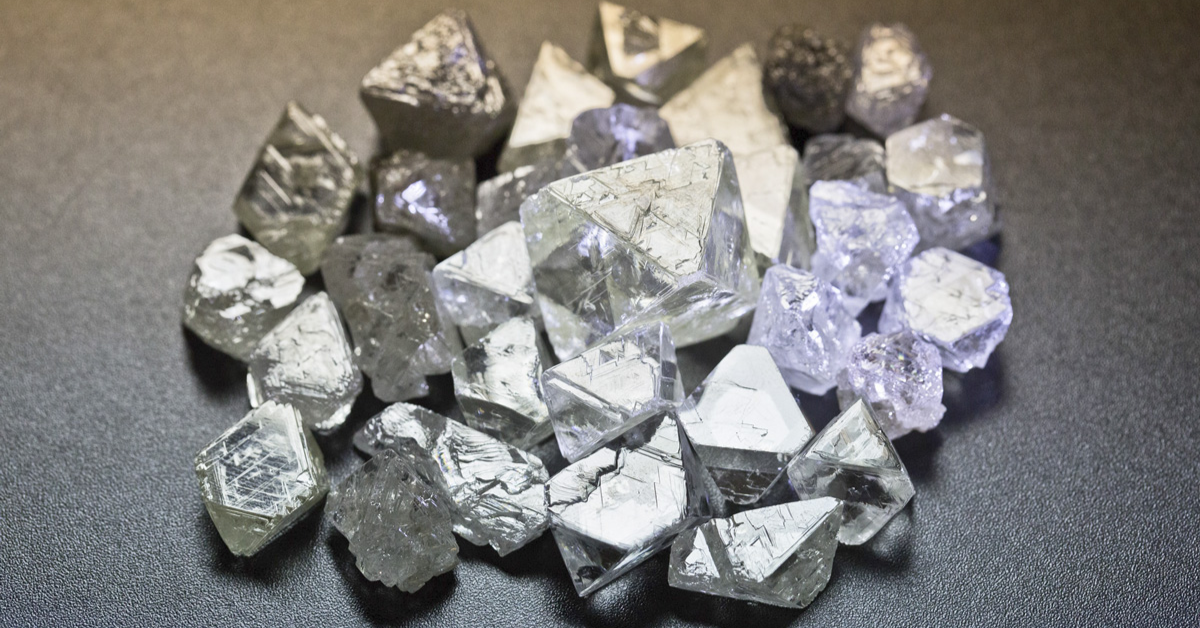Diamonds are one of the most coveted gemstones in the world, symbolising love, wealth, and status. But with the rise of fake diamonds and lab-created alternatives, it’s not always easy to know whether what you’re holding is the real thing. If you’re planning to buy a diamond, learning the difference between real diamonds and fakes is essential to avoid costly mistakes.
This guide walks you through how diamonds are made, how fakes are created, and 10 proven ways to tell the difference between a fake diamond and a genuine one.
How Are Real Diamonds Made?

Real diamonds are formed deep within the Earth’s mantle under extreme pressure and heat over billions of years. They are made of pure carbon atoms arranged in a crystal lattice, giving them unmatched durability and brilliance.
Today, real diamonds can also be produced in laboratories through methods like High Pressure High Temperature (HPHT) or Chemical Vapour Deposition (CVD). These lab-grown diamonds are chemically identical to natural ones, though their origin is different.
How Are Fake Diamonds Made?
Fake diamonds—also known as diamond simulants—are created using materials that mimic the look of diamonds but lack their physical and chemical properties. Common fake diamond materials include:
-
Cubic Zirconia (CZ) – Affordable and sparkly but softer than a real diamond.
-
Moissanite – A silicon carbide crystal with similar sparkle but more rainbow flashes.
-
Glass – Used in costume jewellery but highly prone to scratches.
-
White Sapphire – A natural stone, but softer and less brilliant than diamonds.
These simulants can be made in factories quickly and at a fraction of the cost of a natural diamond.
10 Ways to Tell a Fake Diamond from a Real Diamond

1. The Fog Test
Breathe on the stone to create a fog from your breath. A real diamond disperses heat quickly, so the fog will disappear almost instantly. A fake diamond will remain fogged for a few seconds longer.
2. Water Drop Test
Place the diamond in a glass of water. A real diamond’s high density makes it sink, while many fakes will float or sink slowly.
3. Use a Loupe
Jewellers use a loupe to inspect a stone’s facets and inclusions. Real diamonds often have tiny imperfections (inclusions), while fakes are usually flawless or have air bubbles.
4. Check the Setting and Mount
A genuine diamond is rarely set in cheap metal. Look for hallmarks like 14K, 18K, 750, PT, or Plat to indicate gold or platinum settings.
5. Read-Through Test
Place the diamond on a piece of newspaper. If you can read the text through the stone, it’s likely fake. Real diamonds refract light so strongly that you cannot see clear text through them.
6. Sparkle Test
Diamonds reflect light in three ways: white light (brilliance), rainbow light (dispersion), and surface sparkle (scintillation). Too much rainbow colour may indicate a fake like moissanite.
7. Use a Diamond Tester
Electronic diamond testers measure thermal conductivity. Real diamonds disperse heat rapidly, while fakes do not.
8. Scratch Test
Diamonds are the hardest natural material. They can scratch glass easily, while many fakes cannot. (Be cautious—this test can damage softer stones.)
9. UV Light Test
Under ultraviolet (black) light, many diamonds fluoresce blue. However, not all diamonds do, so this is not a definitive test alone.
10. Professional Appraisal
The most reliable way to confirm authenticity is to take your stone to a certified gemologist for professional testing.
Conclusion
Spotting a fake diamond from a real diamond is possible with a combination of simple at-home tests and professional verification. While no single method is foolproof, using several together can give you a strong indication. Ultimately, the safest way to ensure your diamond is genuine is to buy from a reputable jeweller who provides certification from a trusted gem laboratory like GIA or IGI.
FAQ’s
Can fake diamonds look as good as real ones?
Yes, high-quality simulants like moissanite can closely resemble real diamonds to the naked eye.
Are lab-grown diamonds considered fake?
No, lab-grown diamonds are chemically and physically identical to mined diamonds.
What is the easiest way to tell if a diamond is fake?
The fog test and using a diamond tester are the simplest at-home methods.
Do fake diamonds last as long as real ones?
Most fakes are softer and scratch more easily, so they do not last as long as real diamonds.
